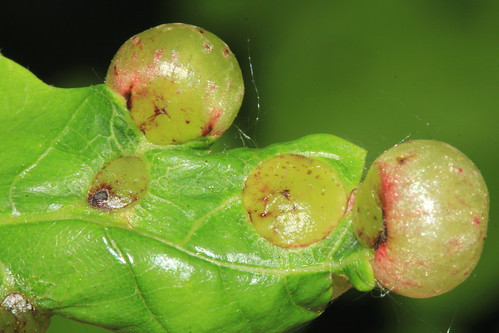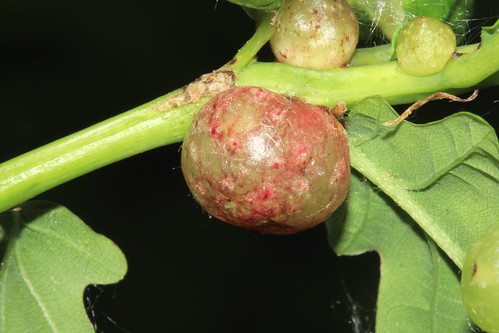This time of year on the reserve you may notice various swellings , growths and such like on leaves of trees. These are Galls or irritatios produced by mainly Wasps, Insects or Mites The one below is the Currant Gall one of two stages the other being the Spangle Gall seen later in the year
A good spot to see Galls is just above the weir at the junction heading toward the rail crossing or abundant throughout the reserve on various Trees from Alder to Oak , Sycamore , Rose Hip and many others . There are currently over 30 listed in the reserve report and they are often more easily found and identified by the effect they have on the host tree or plant
Neuroterus quercusbaccarum - Currant Gall - Neuroterus quercusbaccarum
Description
The male and female of the bisexual generation emerge in June from Currant Galls which are spherical, smooth, succulent, berry-like galls up to 7 mm in diameter which vary in colour from pale yellow through green to red or purple. These galls may occur on Oak leaves or catkins. After mating the fertilised eggs are laid by the sexual generation in the lower epidermis of the Oak leaves. The Spangle Galls develop over the winter and the insects emerge in April, laying their eggs in the catkins or lower epidermis of leaves. The cycle, an alternation of generation, then begins again.




No comments :
Post a Comment